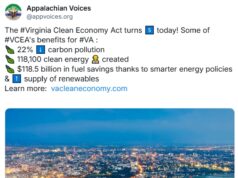Cross posted from Scaling Green
The U.S. Environmental Protection Agency (EPA) has weighed in on the Keystone XL tar sands pipeline analysis done by the State Department, and it’s not impressed. At all. A few key problems, in EPA’s view?
- Greenhouse gas emissions: EPA points out that if “GHG intensity of oil sands crude is not reduced, over a 50 year period the additional C02-e from oil sands crude transported by the pipeline could be as much as 935 million metric tons.” Yet, EPA notes, somehow the State Department’s analysis “nevertheless concludes that regardless of whether the Project permit is approved, projected oil sands production will remain substantially unchanged.” That doesn’t appear to add up.
- Alternative rail transport: The State Department’s analysis assumes that, regardless of whether or not Keystone XL is built, tar sands oil will find its way to market – by rail or by alternative pipeline routes. This finding, EPA points out, “supports [State’s] overall conclusion that approval of the permit will not by itself substantially affect GHG emissions or contribute to climate change.” Yet, EPA appears to be suggesting, the assumptions behind this core finding of State’s report are questionable, and require “further investigation of rail capacity and costs, recognizing the potential for much higher per barrel rail shipment costs than presented.”
- Pipeline safety: EPA argues that “the 2010 Enbridge spill of oil sands crude in Michigan,” demonstrates that “spills of diluted bitumen (dilbit) may require different response actions or equipment from response actions for conventional oil spills,” such as the need for “dredging of bottom sediments…to protect public health and welfare and the environment.” Given this evidence, EPA urges further measures be required to “prevent and detect oil discharges,” as well as to mitigate any impacts in the event of a spill. This process should include “an independent engineering analysis to review TransCanada’s risk assessment of the potential impacts from oil discharges to surface and groundwater resources, as well as TransCanada’s current proposals for placing mainline valves along the pipeline route and installing leak detection equipment.”
- Alternative pipeline routes: EPA is concerned that the State Department’s report “does not provide a detailed analysis of the Keystone Corridor Alternative routes, which would parallel the existing Keystone Pipeline and likely further reduce potential environmental impacts to groundwater
resources.”
The bottom line is that EPA finds the State Department’s Keystone XL analysis to be “insufficient.” Perhaps the fact that a key portion of the State Department’s analysis was prepared by firms with “deep oil industry ties” might have something to do with this?



![Wednesday News: “The Grand Opening of an American Concentration Camp”; Trump Threatens to Arrest Mamdani; “Poorest Americans Would Be Hurt By Trump’s Big Bill”; [VA] GOP nominees share stage, but not unity”; “Hoos your daddy, Virginia?” (Not Youngkin)](https://bluevirginia.us/wp-content/uploads/2025/07/montage0702-238x178.jpg)








